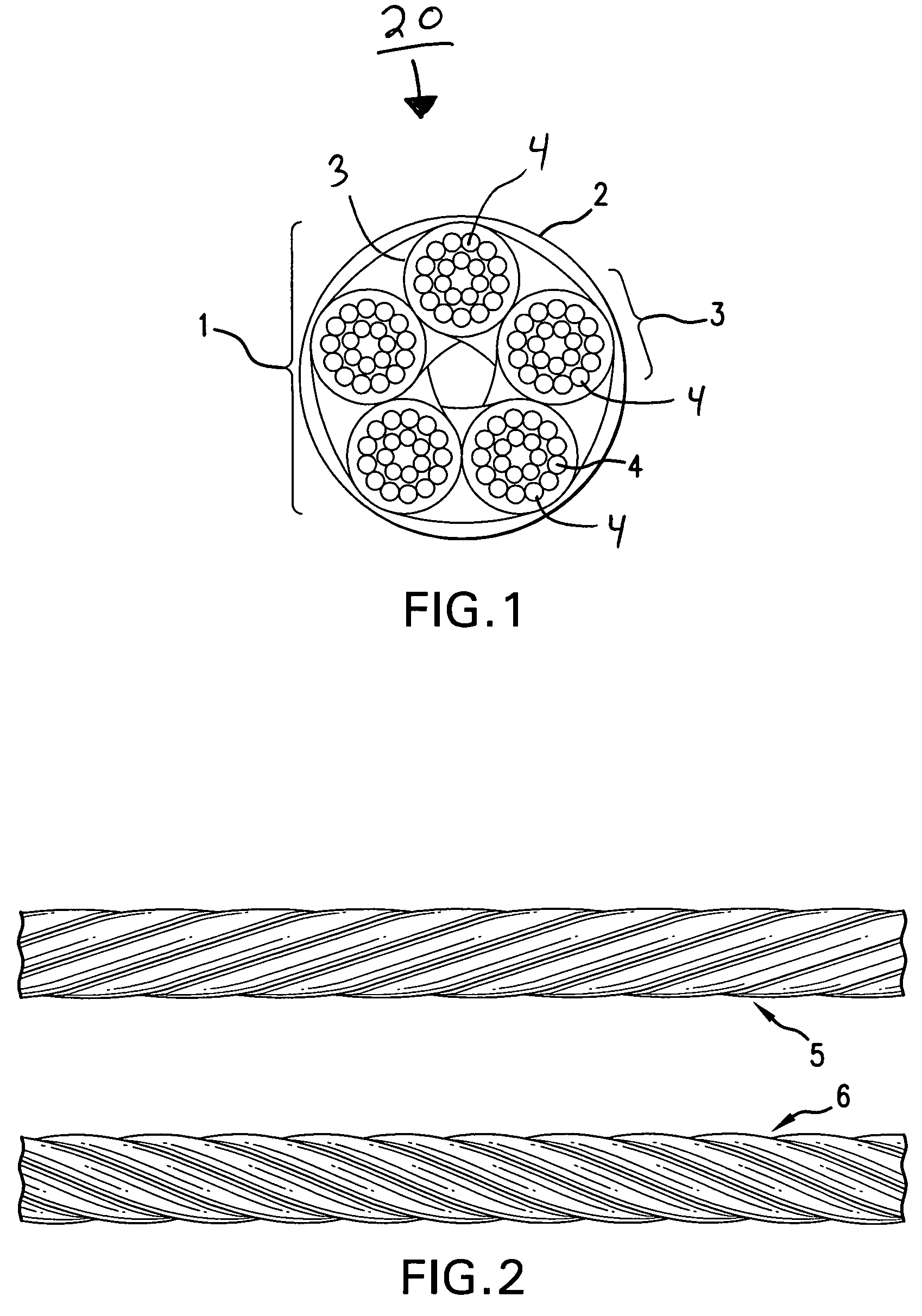Synthetic sling whose component parts have opposing lays
a technology of synthetic slings and components, applied in the field of industrial slings, can solve the problems of synthetic slings being subjected to overload conditions, damage to synthetic slings, and failure of all loops, and achieve the effect of greater strength
- Summary
- Abstract
- Description
- Claims
- Application Information
AI Technical Summary
Benefits of technology
Problems solved by technology
Method used
Image
Examples
Embodiment Construction
[0036]In describing a preferred embodiment of the invention, specific terminology will be selected for the sake of clarity. However, the invention is not intended to be limited to the specific terms so selected, and it is to be understood that each specific term includes all technical equivalents that operate in a similar manner to accomplish a similar purpose.
[0037]Synthetic slings have gained popularity over the last twenty years and are replacing metal slings in many circumstances. Synthetic slings are usually comprised of a lifting core made of a plurality of yarns or strands of synthetic fiber and an outer cover that protects the core. Each individual core yarn is, in turn, made from a plurality of threads. The cover is manufactured from a plurality of fibers.
[0038]The most popular design of synthetic slings is a roundsling in which the load-bearing core is formed from a plurality of core yarns formed in a continuous loop (in a substantially parallel configuration) resulting in...
PUM
| Property | Measurement | Unit |
|---|---|---|
| friction | aaaaa | aaaaa |
| flexibility | aaaaa | aaaaa |
| strength | aaaaa | aaaaa |
Abstract
Description
Claims
Application Information
 Login to View More
Login to View More - R&D
- Intellectual Property
- Life Sciences
- Materials
- Tech Scout
- Unparalleled Data Quality
- Higher Quality Content
- 60% Fewer Hallucinations
Browse by: Latest US Patents, China's latest patents, Technical Efficacy Thesaurus, Application Domain, Technology Topic, Popular Technical Reports.
© 2025 PatSnap. All rights reserved.Legal|Privacy policy|Modern Slavery Act Transparency Statement|Sitemap|About US| Contact US: help@patsnap.com



